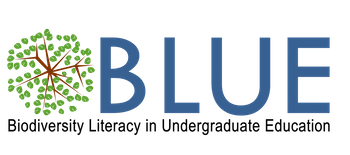Amphibian Diversity: Species Richness and Precipitation
Author(s): Debra Linton1, Anna Monfils1, Molly Phillips2, Libby Ellwood3
1. Central Michigan University 2. iDigBio, Florida Museum of Natural History, University of Florida 3. iDigBio
2940 total view(s), 820 download(s)
BLUE Amphibian Diversity Module data.xlsx(XLSX | 43 KB)
BLUE Amphibian Diversity Module.docx(DOCX | 5 MB)
- License terms
Description
The trade-off between gas exchange and water balance is important constraint in animals. Most terrestrial animals have gas exchange surfaces that are internal, where evaporation is limited and they can be kept moist. For example, mammals’ gas exchange surfaces are inside the moist environment of our lungs. Insects have a system of tubes, called a tracheal system, that brings oxygen directly to the animals’ tissues and can be regulated by pores called spiracles that open and close to reduce water loss.
Amphibians, however, have a mix of terrestrial and aquatic adaptations. For example, most amphibians have an aquatic larval stage with gills for gas exchange. The larvae undergo metamorphosis to become terrestrial adults, which have internal lungs but also perform gas exchange partially across the outer body surface. Sometimes more than 25% of oxygen they use is absorbed directly across the skin. Because of these constraints, amphibians are sensitive to water levels in the environment, and might not be able to exist in habitats that are too dry. In this activity, will compare the species diversity of amphibians in areas with different levels of precipitation to see if there is evidence of this limitation. We will be using iDigBio records as an estimate of amphibian species diversity in different locations.
Students completing this module will be able to:
- Evaluate the osmoregulatory challenges faced by organisms in different environments.
- Download, clean, and analyze data from a digitized natural history collection.
- Evaluate a potential correlation between two variables.
Cite this work
Researchers should cite this work as follows:
- Linton, D., Monfils, A., Phillips, M., Ellwood, L. (2019). Amphibian Diversity: Species Richness and Precipitation. Biodiversity Literacy in Undergraduate Education, QUBES Educational Resources. doi:10.25334/Q4P15S
